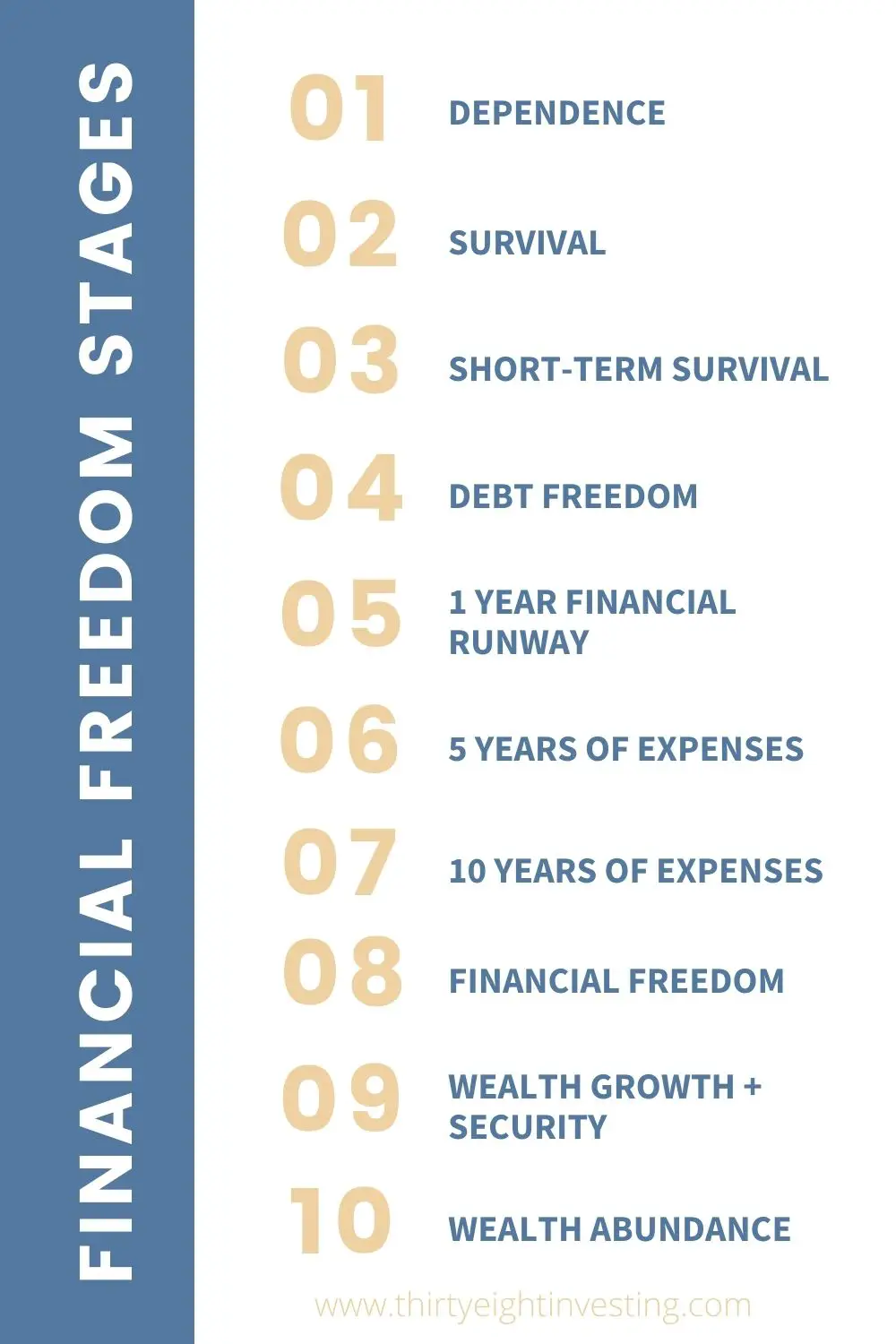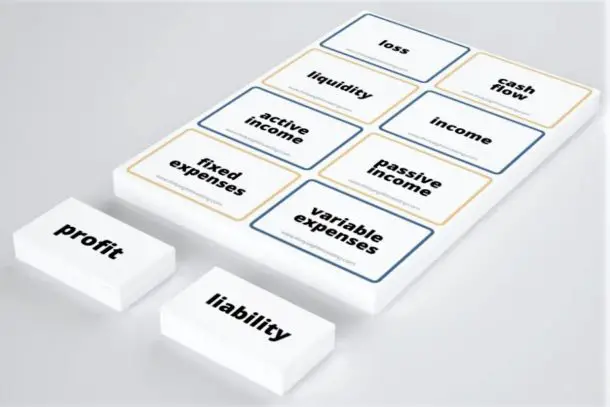Disclosure: This post may contain affiliate links that earn me a small commission, at no additional cost to you! See our disclaimer for details.
What is Financial Freedom?
Financial freedom, also known as financial independence, is the status of having enough regular income to pay for your living expenses every month for the rest of your life without needing to be employed.
Achieving financial freedom is a goal of many people starting a financial journey. The idea of not having to go to work is very appealing, especially for anyone who is entrepreneurial. With being in a digital age, achieving financial freedom is becoming more possible than ever!
There are many ways to achieve financial freedom, including:
- Increasing cash flow
- Having a strict budget
- Reducing expenses
- Eliminating debt
- Growing passive income
- Saving money
- Establishing goals
Why Achieve Financial Freedom?
There are many reasons why you may want to achieve financial freedom. Perhaps you want to do a lot more travel. Or, you may want to help impact the world by starting a nonprofit one day. Maybe you just want to live in the tropics and sit on the beach all day!
Everyone’s reason behind achieving financial freedom is different! However, it takes dedication, time, and a lot of effort in order to achieve the status.
Due to this, the stages to financial freedom are split apart into tangible and achievable steps. In this article we will go over ten stages of financial freedom.
The ten stages to achieving financial freedom are:
- Stage 1: Dependence
- Stage 2: Survival
- Stage 3: Short-term Survival
- Stage 4: Debt Freedom
- Stage 5: 1 Year Financial Runway
- Stage 6: 5 Years of Annual Expenses
- Stage 7: 10 Years of Annual Expenses
- Stage 8: Financial Freedom
- Stage 9: Wealth Growth and Security
- Stage 10: Wealth Abundance

The 10 Stages of Financial Freedom
Stage 1: Dependence
The first, and lowest, stage two financial freedom is dependence. This stage essentially means you require financial assistance from other people in order to live and survive.
If you consider a child, they are dependent on their caregivers to provide them food, shelter and the basic necessities for survival! there are many people who still depend on other individuals in order to find day-to-day living.
For example, there are many retired older adults who can only survive off of their Social Security or pension checks. Additionally, there are plenty of teenagers who still live at home and don’t have a job, and are dependent on their parents for finances.
The stage of dependence is the first stage to financial freedom because it requires no effort. However, it is not a stage that can foster any wealth growth! It requires other individuals to build active or passive income in order for a person too have their needs met.
Stage 2: Survival
The second stage to financial freedom is survival. This stage is considered the paycheck to paycheck stage.
One of the first steps in any method toward debt freedom is getting away from the paycheck to paycheck lifestyle. This lifestyle is when your expenses match the same amount as your income. Unfortunately with this stage, the focus is always on survival.
Reason being, when living paycheck to paycheck a person rarely has savings or an emergency fund. If an emergency happens, the person may borrow from family members, seek dangerous or illegal quick-cash methods or will open a high interest loan.
Although it is great that a person transitions from stage 1 to stage 2, this is a stressful stage to be in. By simply implementing a monthly budget or picking up a second job, transitioning into stage three of financial freedom is not too difficult.
Save money by utilizing a No Spend Challenge! Learn how, here!
Stage 3: Short-term Survival
The third stage of financial freedom revolves around having a small emergency fund and potentially sinking funds as well.
An emergency fund is money set aside specifically for emergencies. Emergencies, whether it be medical or simply an appliance going out, are a huge reason for people getting into debt and having high monthly expenses.
In order to have an emergency fund, a person must analyze their current financial situation and determine a way to set aside at least $1000 into a bank account. $1000 is the bare minimum recommended amount for an emergency fund.
Where should I set money aside for my emergency fund?
- Money Market Accounts: MMA’s are similar to savings accounts with some checking account qualities. Many MMA’s will offer a high-interest rate (around 2%) and will allow for check-writing. Some even offer an ATM card for you to access your money easily, making it a strong candidate for holding your emergency fund. The downside for Money Market Accounts is that many of them require a high minimum balance, and could penalize you with fees in various ways.
- High-Yield Savings Account: This is the best alternative to a money market account. Traditional savings accounts offer very low rates (The national average interest rate for savings accounts is 0.09%) but many banks are starting to offer higher interest rates to stay competitive. We are now starting to see savings accounts, particularly from online banks, offering closer to 1.5% and even upwards of 2% interest. The difference between a 0.09% and a 2% interest rate is huge.
Establishing a sinking fund would be the second part of this financial freedom stage. Sinking funds consist of money set aside for expected expenses, like insurance costs, Christmas, and subscription services. Although emergencies are the common way to quickly get into more debt, having a sinking fund is the next tier for having control over your expenses.
Stage 4: Debt Freedom
Achieving debt freedom is the 4th stage toward financial freedom.
Being debt free means that you no longer must pay for any debt. This can include student loans, medical debt, credit card bills, personal lines of credit, and any other debt you may have accrued.
Many people spend most of their time in stage four. This is because achieving that freedom requires the most personal change!
In order to pay off 10s of thousands of dollars, people most likely have to pick up extra jobs or side hustles, stop spending spontaneously, potentially moving to a smaller home, change jobs, and have an overall behavioral change about money.
Unfortunately, because of the drastic lifestyle changes of this stage toward debt freedom, most people also stop at this stage. Depending on someone’s previous history with money, this stage can also take many years. Without seeing a growth in wealth, it can become unmotivating too pursue financial freedom.
Stage 5: One Year Financial Runway
Stage 5 consists of building a financial runway of one year of expenses saved up.
Having a financial runway of one year of expenses was coined by Scott Trench in his popular book, [Set for Life. The reason why having one year of expenses set aside in a liquid account is because this allows you to step away from a job and create income from something you are truly passionate about!
Achieving this level of freedom is a stage that many will never achieve. It requires a lot of saving, investing , and hard work in order to save up enough money to cover a year’s worth of expenses.
There are many ways to transition from simply being debt free to having 12 months of money set aside. Now, what is important to realize is that this one year financial runway specifically is for your lifestyle expenses. Lifestyle expenses our expenses for surviving, not taking lavish vacations or buying expensive materialistic items.
This amount typically is around $30,000 for an average American. Living on this amount of money for family would require diligent budgeting and significantly reduced materialistic spending! However, one year of dedicated work toward building a business is life changing compared to someone who tries to build a side hustle with only a few hours a week.
Where should I set aside my financial runway?
As mentioned above, MMA’s and High Yield Savings Accounts are great places to secure your money that is set aside.
It is key to stay away from putting your money into:
- Taxable Brokerage Accounts: Be wary of investment accounts since they are quite volatile. In addition, withdrawing money from a taxable brokerage account exposes you to capital gains tax, hence why it’s called a “Taxable Brokerage Account.”
- Checking Accounts: If anything, checking accounts are a little too accessible; you don’t want to be tempted to spend your financial runway on anything other than potential emergencies. The biggest problem? They don’t earn you any interest. Your money will just be sitting there losing value, so avoid holding your emergency funds in a checking account.
Learn about the $30 Millionaire Challenge to grow your wealth and retire early!
Stage 6: 5 Years of Annual Expenses
The sixth stage to financial freedom is having five years of annual expenses.
Having a five year financial runway is a point where many people are able to exponentially grow their wealth. When you have this much money available in assets and other accounts, your fear of surviving and worries about your next paycheck are gone.
In order to jump from stage 5 to stage 6, there is a lot of financial change that needs to happen. For example, this may require someone to build a business in order to bring in much more money then their previous W2 job.
Additionally, in order to grow this much money, the majority of people find ways to build passive income. Passive income is money that is generated from efforts that were put forth before hand. This could be like developing a digital product and selling it in the future, or buying rental properties and earning monthly cash flow from the rent.
By this point of financial freedom, the individual has a very strong understanding of their finances in how to grow wealth. However, it still is not enough for complete financial freedom.
Stage 7: 10 Years of Annual Expenses
The seventh stage to financial freedom is having 10 years’ worth of expenses in assets or other accounts.
By this point, a person’s wealth is more rapidly growing. Having 10 years of expenses allows a person to never fear their monthly expenses and to potentially live a more lavish lifestyle.
Stage 8: Financial Freedom
Achieving financial freedom is when you have enough wealth generation an money coming in to fully support your lifestyle.
This number is different for every person. Some people would be content with very few materialistic items and experiences, while others want to live a more wealthy looking lifestyle. Therefore, the timeline to achieving financial freedom is vastly different for each individual.
The key to achieving true financial freedom is to have your wealth work for you. This means growing passive income and finding ways to invest your money in order to grow more money. This allows you to work less, especially over a period of time.
Establishing enough streams of income can take a long time, in it varies significantly based off of what you decide to invest in.
The reason so many people want to achieve financial freedom is because it is the stage where you no longer have to think about money. The key is to achieving enough passive income to supplement your chosen lifestyle. having financial freedom makes it so that you can travel as much as you want, experience what you want, and not feel the burden of ever needing to go work in order to live.
Stage 9: Wealth Growth and Security
The stage after financial freedom is a stage of financial growth on top of your living expenses.
Achieving financial freedom is essentially having enough regular passive income to cover your living expenses. However, depending on your life goals and experiences that you want to have, having additional wealth growth will allow you the opportunity to have many more unique experiences.
For example, there are people who go on yearlong world tours, study with monks, and spend years helping the poor in other countries.
In order to fund these experiences, a person would need more money than just their typical living expenses. However, what is great about the ninth stage of financial independence is that many people stop thinking about themselves and are able to help others by establishing non profits or paying for projects.
Stage 10: Wealth Abundance
The final stage of financial independence is wealth abundance. This stage is when you have far more money than you could ever need and are able to make an impact on the world with your wealth.
We have all seen the Jeff Bezos and Bill Gates of the world. These are people who have created a wealth machine. They all had to begin somewhere, but these people who have achieved wealth abundance now have enough money to make large impacts on the world.
This may look like funding large buildings, funding startups, making large donations, and so forth.
This stage of financial independence is much rarer to achieve. In fact, most people don’t want to achieve this stage! It all depends on your goals for life and world impact – and if you have the business mindset to get there!
The Journey to Financial Independence
Many people begin financial journeys but stop too soon! This is because this journey looks very different for each individual. Some people only have to pay off a few $1000 of debt while others may have to pay off over $100,000.
Additionally, some people may need significantly more or less money in order to have their lifestyle needs met.
The key with the journey to financial freedom is to find ways to stay motivated. This includes having budget meetings with your spouse or accountability partner, having established goals, and always trying to do one thing each day to get yourself one step closer to your goal!


